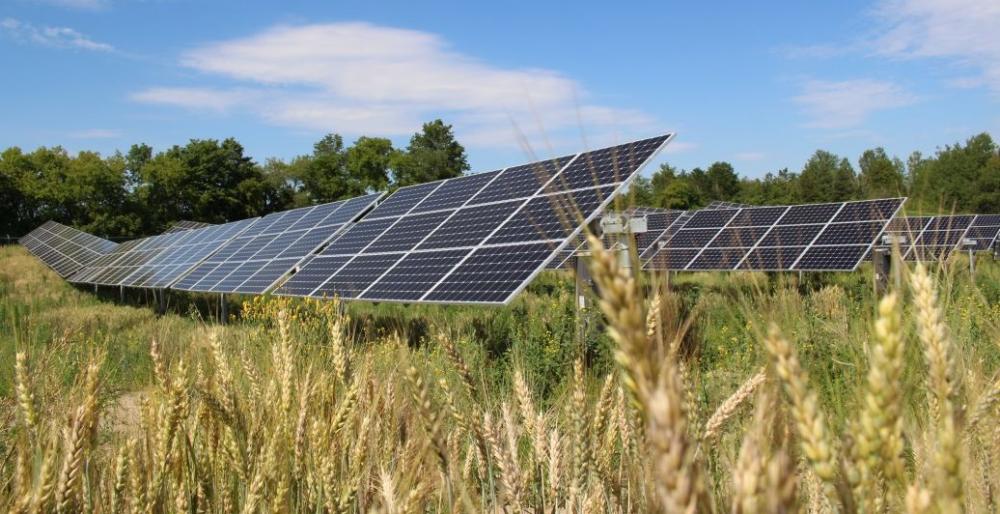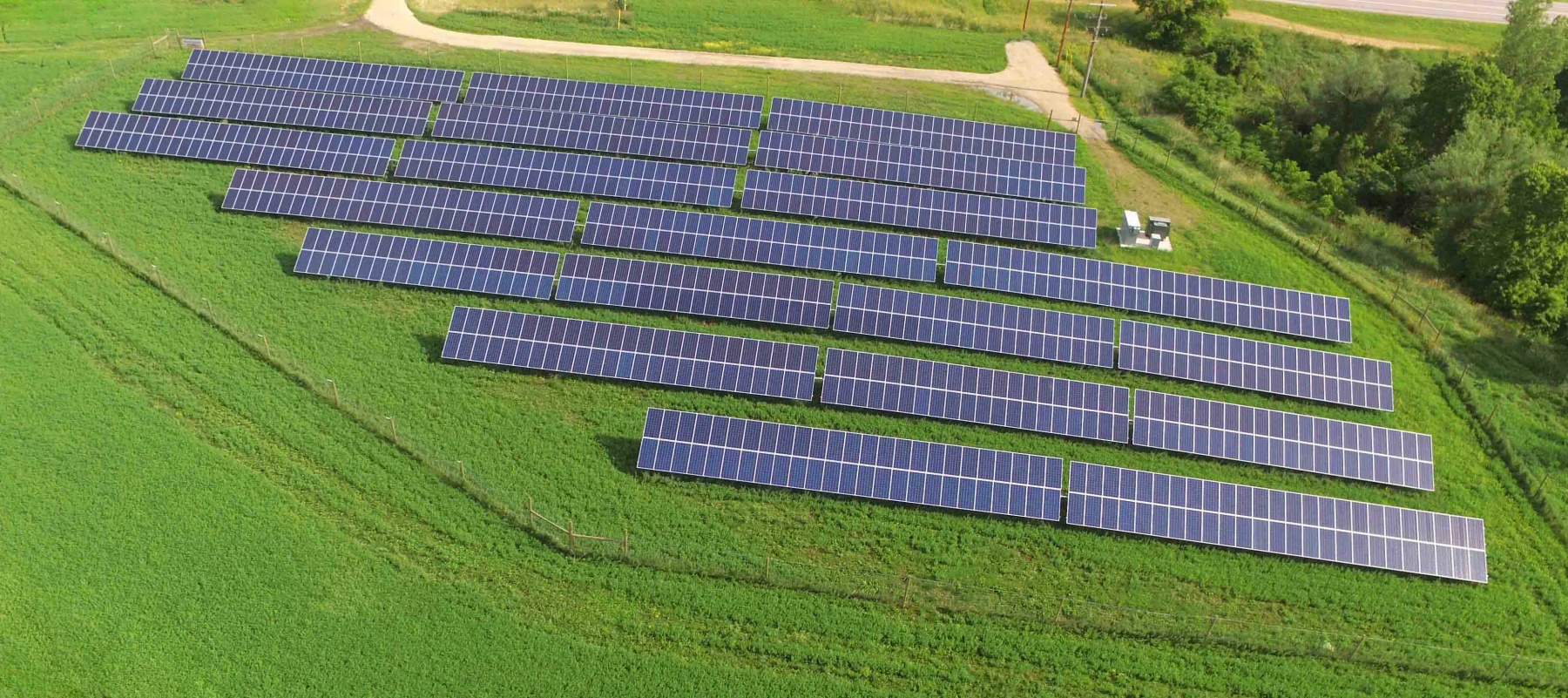2020 Minnesota Legislature: Strengthening Our Community Solar Garden Program
Since its inception in 2014, the Xcel Energy Community Solar Garden (CSG) Program has garnered great investment and support as a leading piece of Minnesota’s clean energy economy. After the program took off in 2016, Minnesota watched the number of jobs in solar energy double.

MnSEIA’s Regulatory Efforts
As the CSG market has matured, most of the work to keep it healthy has been regulatory in nature. MnSEIA’s work at the Public Utilities Commission in particular has helped shape the CSG program for the better.
Planned Outages:
One of the headaches for a Community Solar owner or operator and for subscribers can be when a garden is taken offline because of nearby utility construction. Nothing impacts the production projections for a year like two months of shutdown when the sun is shining.
MnSEIA will work this summer with Xcel Energy and other MnSEIA members to determine the most equitable pathway for compensating existing generators, or mitigating the impacts that the shutdowns may have. These solutions may include utility compensation measures, the payment by new gardens for other outages, and technical solutions. In the meantime, we are working with the utility in a case-by-case manner to help reduce outage costs.
For example, recently Xcel had scheduled a ten week outage for 17 1MW projects due to work necessary to connect a new garden scheduled to come online in the summer. To work out an equitable solution, Xcel reached out to MnSEIA, and we organized a conference call between all the developers impacted—both gardens that would be subject to outage and those behind in the queue.
So, the actual least cost solution—which was negotiated by MnSEIA—was for the existing gardens to pool resources to build a new line that would bypass the existing line while it was upgraded. We estimate that this new line will have saved the impacted gardens hundreds of thousands of dollars, if not millions.
This specific example of regulatory problem-solving grew from MnSEIA’s efforts to improve the planned outage situation. Those efforts have driven Xcel to commit to improvement of communication for outage start date and time, outage duration in days, and steps taken to mitigate the individual planned outage. You can read more about planned outage harm mitigation in docket 13-867, and in Xcel’s recent filing here.
The Value of Solar:
You can read more about the Value of Solar here on MnSEIA’s website.
Every year, MnSEIA represents the industry at the Commission through our work to make the Value of Solar the best rate possible. MnSEIA reviews Xcel’s calculations of the VOS, which has eight components. One of those, the distribution capacity component, has been subject to a possible shift toward a locational component. This proposal would divide the state into different geographical sectors, and calculate the value of distributed energy resources in each sector—thereby producing many, slightly different VOS rates. MnSEIA found that the first attempt at shifting the distribution capacity component toward the more granular locational component produced inconsistent results that devalued the VOS. Our testimony to that effect steered the Commission back toward the distribution capacity component.
MnSEIA’s oversight of this very complex set of calculations that goes into the VOS has resulted in better rate outcomes for the industry and later implementation dates so that projects in queue can get the desired VOS vintage year.
MnSEIA’s Legislative Efforts
What does a “healthy” Community Solar Garden (CSG) program look like? How can Minnesota continue to lead our nation with a community-centric suite of reforms? These are the questions before the Minnesota Legislature as it looks at improving Minnesota’s CSG program. The changes discussed below, if adopted, should help customers, the solar industry and the environment.
Proposed legislative reform for the CSG program has seen a variety of approaches in the House and Senate this biennium. House files 3368, 3931, and 2625, and Senate files 2697 and 3213 are some of these legislative pathways.
With the normal legislative discourse bandwidth-limited by COVID-19, the most fruitful pathway forward this year might be through direct negotiations between MnSEIA and Xcel. What follows is an overview of issues MnSEIA has pushed through the last biennium, and which are key to the CSG negotiations today.
These three issues are key to the negotiations moving Community Solar forward in Minnesota:
- Remove the contiguous county restriction;
- Create a new category of CSGs—Community Access Projects—that are primarily residential, include access for low-income subscribers, on-bill repayment, transparency requirements, and a higher subscription rate; and
- Transition mid-size solar over the next decade from Community Solar to a walk-up Distributed Generation tariff.
Removing Contiguous County Restrictions:
Since the launch of the Community Solar program, gardens must be built in the same county or a county contiguous to where its subscribers are located. With the subscriber base largely in the Metro area, Greater Minnesota has largely missed the economic development and subscriber benefits that CSGs can bring.
Removal of the contiguous county requirement will also ease the burden on certain substations in Metro area counties, and provide new opportunities for CSG developers.
Community Access:
As we’ve seen in some proposed bills this biennium, Community Solar 2.0 would include a new type of CSG called a “Community Access Project,” which will give developers the option to participate in a program designed to spur higher levels of residential engagement. Among a handful of other program requirements, all Community Access Projects must have at least 50% of the garden’s generating capacity subscribed to residential customers. In exchange, the rate subscribers to the garden will receive will be at the retail rate. This is a much higher value for residential customers than they currently get under the Value of Solar rate.
Additionally, the bill includes a Low-Income Home Energy Assistance Program (LIHEAP) Community Solar Garden Grant Program. Gardens that are 500kW or less in size that have 100% residential customers that receive LIHEAP assistance, among other program requirements, are eligible to receive grants from the Department of Commerce to develop a local Community Solar Garden.
The bill whole-heartedly embraces residential and low-income participation in the community solar gardens program. They really aim at driving more access to our nation-leading program.
